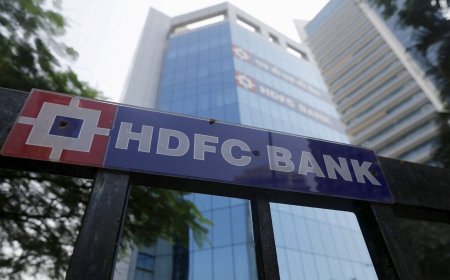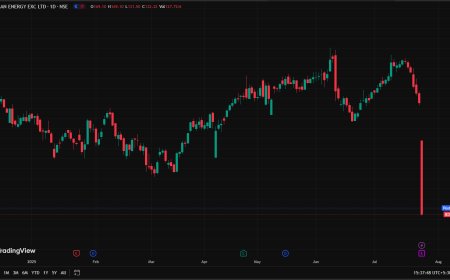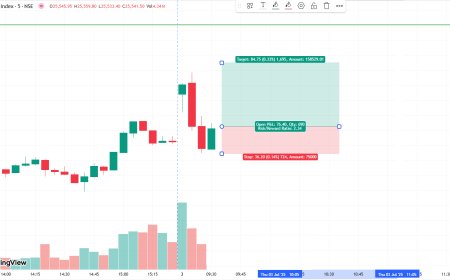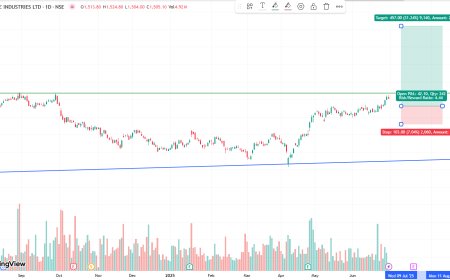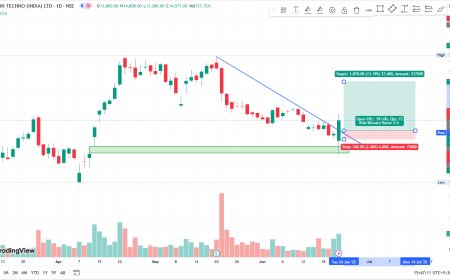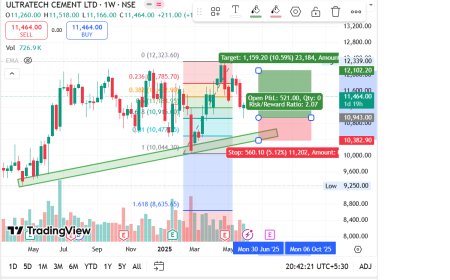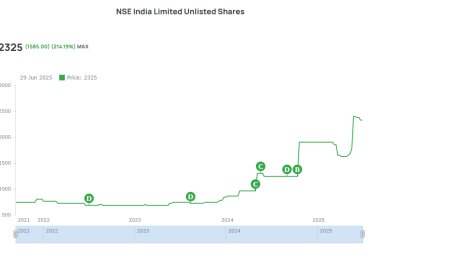Indian Bond Market Strengthens Amid Easing Inflation and RBI's Expansionary Stance: Jefferies
Easing inflation and the RBI's supportive monetary policy are driving optimism in India's bond market, according to global brokerage Jefferies.

India’s bond market is showing notable resilience and strength, bolstered by easing inflationary pressures and a persistently accommodative policy stance by the Reserve Bank of India (RBI), according to a new report by global investment firm Jefferies.
As macroeconomic indicators suggest a stable price environment and supportive fiscal cues, investor confidence in debt instruments has surged, pushing yields lower and opening the door for potential capital gains across the fixed-income landscape.
RBI’s Pro-Growth Policy Drives Momentum
Jefferies analysts highlighted that the RBI’s continued expansionary approach is a key catalyst for the bond market rally. The central bank has maintained a status quo on interest rates, holding the benchmark repo rate at 6.50% for several months, while also ensuring adequate liquidity in the system.
"The Reserve Bank of India's clear commitment to supporting growth, along with a benign inflation trajectory, provides a constructive backdrop for fixed-income assets," Jefferies said in its note to investors.
The central bank’s dovish tone in recent monetary policy reviews, combined with an improved global rate environment, has further boosted demand for Indian government securities (G-Secs) and corporate bonds.
Inflation Trends Offer Relief to Debt Investors
India’s retail inflation (CPI) has consistently trended lower in recent months, easing to 4.8% in April 2025 from a peak of 7.4% in 2023. This decline has offered much-needed comfort to bond investors who were previously wary of interest rate volatility.
"Lower inflation reduces the real return erosion for fixed-income instruments, making bonds more attractive to both domestic and foreign investors," explained Nidhi Verma, Fixed Income Strategist at Jefferies India.
The moderation in food and fuel prices, alongside a relatively stable rupee and favorable base effects, has supported the inflation narrative. Additionally, the government's prudent fiscal management has helped anchor inflation expectations.
Yield Curve Shows Bullish Signals
The Indian bond yield curve has flattened in recent weeks, with long-term yields declining amid a stable short-term outlook. The 10-year benchmark government bond yield has softened to around 6.85%, down from 7.25% earlier this year.
Jefferies noted that this compression reflects increased demand for longer-duration securities, driven by institutional investors positioning for a lower-rate environment.
"Investors are rebalancing their portfolios toward duration-heavy instruments, anticipating that the RBI might even consider rate cuts in late 2025 if inflation remains within the target band," the report added.
Foreign Portfolio Inflows Add to Optimism
The Indian debt market has also witnessed renewed interest from Foreign Portfolio Investors (FPIs), especially after India’s inclusion in JPMorgan’s emerging market bond index. According to data from the National Securities Depository Limited (NSDL), net FPI inflows into debt have exceeded ₹25,000 crore in 2025 so far.
This surge is partly attributed to the prospect of stable returns and the favorable risk-reward profile of Indian bonds, especially in comparison to volatile equity markets globally.
"India’s bond yields remain attractive on a relative basis. With global uncertainty and rate normalization in advanced economies, EM debt, particularly Indian bonds, offers diversification with growth potential," said Anil Deshmukh, head of global strategy at Jefferies.
Corporate Bond Market Also Benefits
Beyond sovereign debt, corporate bond yields have also seen compression, especially for AAA-rated papers. Demand from mutual funds, insurance firms, and pension funds has risen, driven by a search for yield in a low-inflation environment.
Jefferies noted a healthy uptick in corporate bond issuance, supported by declining borrowing costs and strong corporate balance sheets. Sectors like banking, infrastructure, and energy have led the issuance pipeline in Q1 FY26.
Investor Outlook: Turning Bullish
The overall outlook for the Indian bond market appears increasingly bullish. Market participants are positioning for a scenario where inflation remains within the RBI’s 4% ±2% target range, and global central banks pivot toward easing by late 2025.
Jefferies recommended a constructive view on duration and sees value in longer-tenor G-Secs and high-quality corporate debt.
"We remain overweight on Indian debt. The improving macro stability, policy consistency, and inflow tailwinds make it a strong candidate for global investors looking at emerging market exposure," the firm stated.
However, it also cautioned against potential geopolitical risks and oil price volatility that could disrupt the inflation outlook and force a more hawkish pivot from the central bank.
Conclusion
India’s bond market is entering a phase of renewed strength, underpinned by supportive monetary policy and easing inflation. As global headwinds subside and domestic fundamentals improve, fixed-income instruments in India are drawing greater attention from both domestic and international investors. If current trends persist, 2025 could mark a significant turning point for India’s debt markets.
What's Your Reaction?
 Like
0
Like
0
 Dislike
0
Dislike
0
 Love
0
Love
0
 Funny
0
Funny
0
 Angry
0
Angry
0
 Sad
0
Sad
0
 Wow
0
Wow
0



























